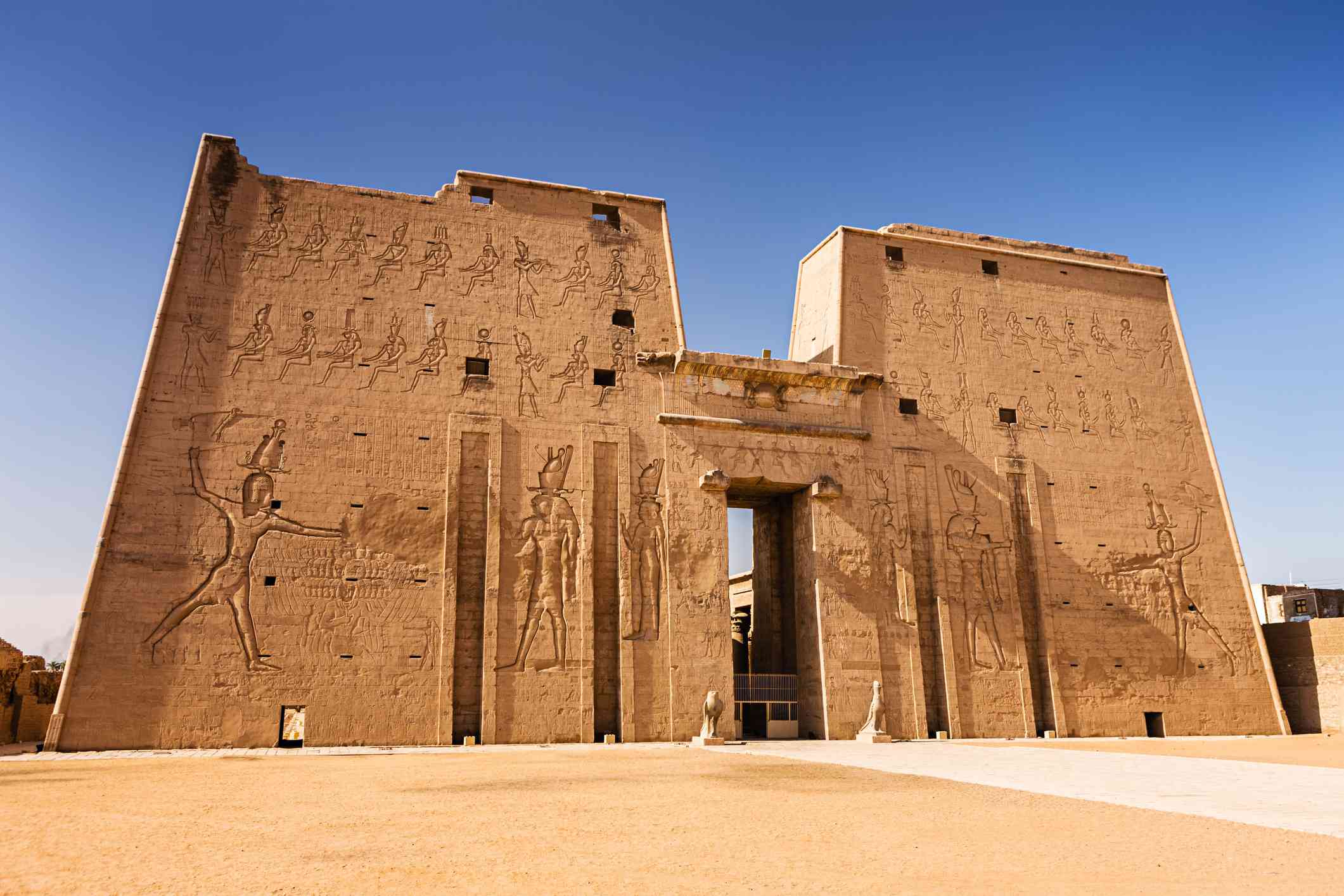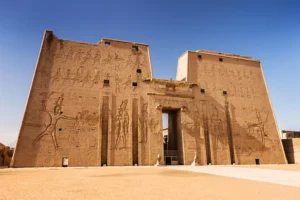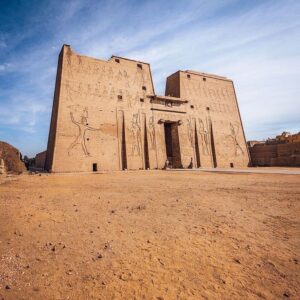Horus Temple in Edfu, Egypt

The Temple of Horus is situated in the ancient city of Edfu on the west bank of the River Nile, roughly halfway between the two major ports of Luxor and Aswan. As one of Egypt’s best-preserved historical sights, it is a favorite stop for cruising tourists and independent visitors traveling overland through the Nile Valley. There are two reasons for its incredible condition. Firstly, it was built much more recently than Egypt’s oldest pharaonic monuments; and secondly, it was filled with protective desert sand for centuries before its excavation in the mid-19th century. Today it is one of the country’s most atmospheric ancient temples.

History of the Temple
The existing Temple of Horus was constructed on the site of an earlier temple, also dedicated to Horus, the falcon-headed sky god. Because he was considered the protector of the pharaohs, Horus was a popular choice for temple dedications in Ancient Egypt. The current temple is Ptolemaic rather than Egyptian, however, having been commissioned by Ptolemy III Euergetes in 237 BC and completed in 57 BC during the reign of Cleopatra’s father, Ptolemy XII Auletes. The Ptolemy dynasty was founded in 305 BC by a Macedonian compatriot of Alexander the Great and was the last and longest-ruling dynasty in Egyptian history.

The temple was the largest one dedicated to Horus’s cult in all of Egypt and would have hosted many festivals and celebrations held in his honor. Its size gives an idea of the prosperity of the Ptolemaic era, and the richness of its inscriptions has contributed greatly to our knowledge of Egypt as a Hellenistic state. The temple continued as an important place of worship until 391 AD when Roman emperor Theodosius I issued an edict banning paganism throughout the Roman Empire. Christians converts attempted to destroy many of the temple’s reliefs while black scorch marks on the ceiling of the hypostyle hall suggest that they tried to burn it to the ground.
Fortunately, their efforts were unsuccessful. In time, the temple was buried by desert sand and silt from the River Nile until only the upper sections of its pylon, or monumental gateway, remained visible. The pylon was identified as belonging to the Temple of Horus by French explorers in 1798. Still, it wasn’t until 1860 that legendary French Egyptologist Auguste Mariette began the arduous task of excavating the site and returning it to its former glory. As the founder of the Egyptian Department of Antiquities, Mariette was responsible for the recovery and restoration of many of Egypt’s most famous ancient monuments.